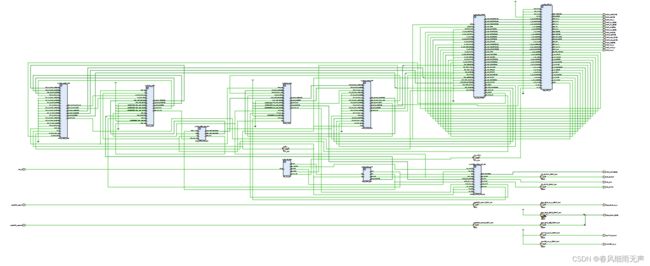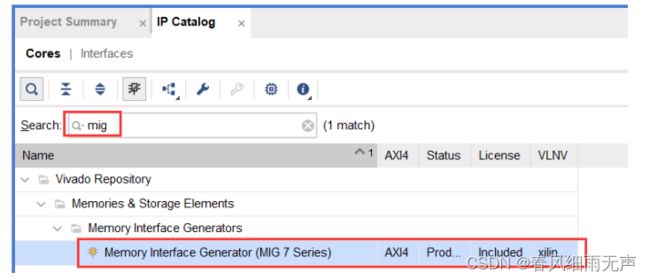- Solidity——什么是低级调用(low-level calls)和操作码的内联汇编
这是Solidity高级开发中很重要的两个概念,通常用于:精细控制合约行为(比如合约间通信、控制gas、避免fallback限制)编写高性能或底层逻辑的合约(例如代理合约、MEV、Gas优化等)我们逐一讲清楚:✅一、什么是低级调用(Low-levelcalls)Solidity提供了几种**“低级”函数调用方式**,用于替代标准的函数调用。这些函数更原始、更灵活,但使用不当容易出bug(比如失败不
- 今日Github热门仓库推荐2025-07-08
今日Github热门仓库推荐2025-07-08如果让AI分别扮演后端开发人员和前端开发人员,然后看看他们分别对github每天的trending仓库感兴趣的有哪些,并且给出他感兴趣的理由,那会发生什么呢?本内容通过Python+AI生成,项目地址跳转后端开发人员推荐仓库名称:rustfs/rustfs仓库推荐理由:作为一个有10年后端开发经验的工程师,我对高性能和分布式系统有浓厚的兴趣。Rust
- 前端微服务架构详解
醉方休
架构前端微服务
前端微服务架构详解前端微服务是一种将微服务理念应用于前端开发的架构模式,它允许将大型前端应用拆分为多个独立开发、部署和运行的小型应用。一、核心概念1.什么是前端微服务独立开发:每个微应用可由不同团队独立开发独立部署:无需整体发布,单个微应用可单独部署技术异构:不同微应用可以使用不同技术栈(React、Vue、Angular等)运行时集成:在客户端动态组合成完整应用2.与传统SPA的区别特性传统SP
- Web前端工程化
Web前端工程化前端工程化是指将软件工程的方法和原则应用到前端开发中,以提高开发效率、保证代码质量、便于团队协作和项目维护的一套体系化实践。以下是前端工程化的主要内容和实践:核心组成部分1.模块化开发JavaScript模块化:CommonJS、AMD、ESModuleCSS模块化:CSSModules、CSS-in-JS组件化:Vue/React/Angular组件体系微前端:将大型应用拆分为多
- C#随机数生成全面详解:从基础到高级应用
阿蒙Armon
C#工作中的应用c#网络服务器
C#随机数生成全面详解:从基础到高级应用随机数在编程中有着广泛的应用,从游戏开发中的随机事件、数据采样、密码生成到模拟测试等场景都离不开随机数。C#提供了多种生成随机数的方法,每种方法都有其适用场景和特点。本文将全面介绍C#中生成随机数的各种技术,从基础的Random类到加密安全的随机数生成器,帮助开发者根据实际需求选择合适的方案。一、随机数基础1.什么是随机数随机数是指在一定范围内无规律可循的数
- json学习路线
学习nlohmann/json这个项目有两种角度:⸻✅你想学哪种?我可以分别给你指引:学习角度你想学的是对应建议用户角度(日常使用)如何使用它来解析/生成JSON阅读官方文档+写小项目练练⚙️开发者角度(源码剖析)它是如何实现JSON的(模板、结构等)阅读源码+分析AST+阅读测试用例⸻一、用户角度(快速掌握使用json库)✅第一步:先看官方文档示例官网仓库就有清晰用法:https://githu
- 接口漏洞怎么抓?Fiddler 中文版 + Postman + Wireshark 实战指南
2501_91591841
httpudphttpswebsocket网络安全网络协议tcp/ip
接口安全是现代应用开发中的高危环节:一旦API存在未授权访问、参数篡改、权限绕过等漏洞,可能直接导致用户信息泄露、资金损失甚至整个平台瘫痪。对于开发和安全人员来说,光依赖后端日志排查远远不够,需要对接口进行主动安全性验证。而Fiddler抓包工具提供了灵活的请求拦截、修改、重放功能,是在API安全防护与漏洞复现中必不可少的工具。再结合Postman、Wireshark等工具,可以从接口到网络层做全
- React.js 错误解析:React.Children.only 预期仅接收单个 React 元素子节点
JJCTO袁龙
reactreact.js前端javascript
React.js错误解析:React.Children.only预期仅接收单个React元素子节点在React.js开发中,React.Children.only是一个非常有用的工具,用于确保组件仅接收单个子元素。然而,开发者可能会遇到一个令人困惑的错误:React.Children.onlyexpectedtoreceiveasingleReactelementchild。这个错误表明传递给Re
- uniapp - 解决苹果ios真机运行报错:错误:请查看是否设备未加入到证书列表或者确认证书类型是否匹配(HbuilderX运行IOS手机出现问题,uniapp运行到IOS真机提示请查看是否设备未)
王二红
+UniApp+Uniapp开发问题汇总uni-app运行到IOS真机提示错误请查苹果app平台端ios苹果真机调试运行失败书列表或者确认证书类型是否匹配UDID没有任何问题还是提示添加手机设备UUID
前言网上的教程都无法解决问题,本文提供强力解决方案。在uni-appApp端(苹果APP)开发中,强力解决“错误:请查看是否设备未加入到证书列表或者确认证书类型是否匹配”,如何解决hbuilder运行AppiOS端真机调试查看失败无法启动问题,本文解决连接失败、设备UDID已经绑定添加了还是提示这个错误(也确保了udid没有任何问题)、证书profile文件也重新弄了还是不行,本文提供强大多种解决
- 构建完整的ASP+C#和SQL Server新闻发布系统
飞翔的袋鼠弟
本文还有配套的精品资源,点击获取简介:新闻发布系统是互联网的关键应用,本文详细介绍了如何利用ASP、C#和SQLServer技术栈开发和管理新闻内容。文章涵盖了ASP用于生成动态网页、C#后端编程和SQLServer数据库管理的应用和实践,以及新闻发布流程、安全性和性能优化的要点。1.ASP动态网页生成在开发动态网站的过程中,ASP(ActiveServerPages)是一种流行的服务器端脚本环境
- 5 分钟快速入门:使用 Nginx 搭建简易 API Gateway
AI云原生与云计算技术学院
nginxgateway运维ai
5分钟快速入门:使用Nginx搭建简易APIGateway关键词:Nginx,APIGateway,反向代理,负载均衡,微服务,接口路由,跨域处理摘要:本文将系统讲解如何利用Nginx快速搭建一个具备基础功能的API网关,涵盖反向代理、负载均衡、跨域处理、请求转发等核心技术点。通过分步实操演示与原理分析,帮助开发者理解API网关在现代分布式架构中的核心作用,并掌握基于Nginx的快速落地方法。文章
- 开源的人像动画生成工具LivePortrait
研创通之逍遥峰
图像处理人工智能作画
LivePortrait是由快手科技联合中国科学技术大学和复旦大学共同开发的一款先进AI驱动肖像动画工具,它能够将静态的人像照片转化为带有真实面部表情和头部运动的动态视频。这项技术代表了当前AI生成内容(AIGC)领域的最新进展,通过创新的算法设计和高效的计算框架,为用户提供了强大且易用的动画生成能力。以下将从技术原理、核心功能、应用场景、使用方法和比较优势等多个维度,全面介绍这一工具。LiveP
- 筑牢 AIGC 安全防线:警惕提示词注入攻击
CS创新实验室
AIGCAIGC安全大模型提示词提示词注入
在AIGC(生成式人工智能)技术蓬勃发展的当下,其在各个领域的应用日益广泛。然而,随着AIGC技术的深入应用,安全问题也逐渐凸显,提示词注入攻击便是其中不容忽视的一大威胁。对于AIGC开发者而言,深入了解提示词注入攻击并做好防范工作,是保障AIGC系统安全稳定运行的关键。提示词注入攻击的基本知识提示词注入攻击是指攻击者通过精心设计和构造提示词,利用AIGC模型对输入文本的处理机制,干扰模型的正常运
- **深度解析Annotated Jieba:Python中的高效中文分词库**
深度解析AnnotatedJieba:Python中的高效中文分词库去发现同类优质开源项目:https://gitcode.com/项目简介是一个基于Jieba的增强版分词库,为了解决原Jieba库在复杂场景下的需求,它提供了更丰富的功能和更友好的API设计。该项目由USTCDane开发并维护,旨在帮助开发者更好地理解和使用Jieba进行中文文本处理。技术分析1.代码注释与文档AnnotatedJ
- iOS Widget 开发-1:什么是 iOS Widget?开发前的基本认知
技术拾光
iOSWidget技术手册iosswiftswiftuiwidget
随着iOS系统的不断演进,Widget(小组件)已经成为提升用户体验的重要组成部分。从iOS14开始,Apple引入了全新的WidgetKit框架,允许开发者使用SwiftUI创建高度可定制、灵活展示的Widget,并可添加到主屏幕、锁屏界面甚至待机模式中。本篇博客将从基础概念出发,带你了解iOSWidget的作用、类型、开发架构以及常见误区,为后续深入开发打下坚实基础。Widget是什么?Wid
- 通义WebSailor:开启网络智能体新时代
云资源服务商
人工智能ai
引言:WebSailor的横空出世在人工智能技术迅猛发展的当下,新的模型和智能体不断涌现,一次次刷新着人们对AI能力的认知。2024年7月7日,阿里云的一则消息犹如一颗重磅炸弹投入AI领域的湖面,激起千层浪——通义正式开源网络智能体WebSailor。这一开源举措,瞬间吸引了全球AI开发者、研究者以及科技爱好者的目光,在业界引发了强烈震动。一时间,技术论坛、社交媒体上关于WebSailor的讨论铺
- 【Python】Python类型标注革命:Annotated类型深度解析与实战
田辛 | 田豆芽
Pythonpython设计模式类型驱动设计
一、初识Annotated:类型系统的拓展革命作为深耕Python领域多年的开发者,田辛老师在第一次接触typing.Annotated时的感受可以用"惊艳"来形容。这个Python3.9引入的类型构造器,为我们打开了元数据整合的新维度。基本语法结构:fromtypingimportAnnotatedTemperature=Annotated[float,"Celsius"]这里我们创建了一个带有
- Kimi 大模型支持 Tool Calling 功能,并入驻字节「扣子Coze」开发平台!
铃灵狗
新闻人工智能
Kimi大模型API支持ToolCalling功能Kimi大模型学会「使用工具」了,API已支持ToolCalling功能。开发者们在打造自己的AIAgents时,可以让Kimi大模型与丰富的自定义外部工具进行交互,打开AI应用更大的想象空间。例如,在对话中,当用户问到一家公司的地址时,Kimi大模型可以调用地图工具,直观地展示这家公司在地图上的具体位置和交通路线;如果用户想要把文稿做成演示文稿,
- 敏捷开发流程中的缺陷管理方法
测试者家园
智能化测试持续测试敏捷测试敏捷流程智能化测试持续测试DevOps缺陷管理AI赋能人工智能
用工作流生成测试用例和自动化测试脚本!缺陷管理作为软件质量保障的核心环节,其效果直接影响软件交付的质量与客户满意度。传统的缺陷管理流程往往流程复杂、响应缓慢,难以满足敏捷开发快速迭代、持续交付的节奏。敏捷开发环境下,缺陷管理面临诸多挑战:频繁变更的需求、缩短的迭代周期、多角色协作和实时反馈的要求,促使缺陷管理必须转型升级。本文将深入探讨敏捷开发中的缺陷管理方法,从理念、流程、工具和实践四个维度展开
- 在Ubuntu主机中修改ARM Linux开发板的根文件系统
牧以南歌〆
嵌入式Linuxlinuxubuntuarm开发驱动开发
目录在Ubuntu主机中修改ARMLinux开发板的根文件系统一、安装环境二、根文件系统镜像扩容三、挂载扩容后的根文件系统镜像四、修改相关配置五、创建挂载脚本六、切换回主机目录七、取消挂载八、精简根文件系统镜像大小在Ubuntu主机中修改ARMLinux开发板的根文件系统开发环境:Ubuntu20.04、飞凌OK3568开发板、开发板使用的根文件系统镜像为ubuntu.img一、安装环境首先使用以
- 数据库面试题06为什么要用MyBatis框架?
MyBatis是一个优秀的持久层框架(虽然常被归类为“半自动化”ORM,但其核心更侧重于SQL映射),它在Java开发中广泛应用,尤其在需要精细控制SQL、处理复杂查询或与遗留数据库交互的场景中备受青睐。选择MyBatis的主要原因可以总结为以下几点:对SQL的完全控制权(核心优势):开发者手写SQL:MyBatis要求开发者直接编写SQL语句(在XML映射文件或注解中)。这与Hibernate/
- PyTorch深度学习优化实战:从理论到实践的现代化技能指南
智算菩萨
深度学习pytorch人工智能
引言:现代PyTorch开发的核心思维在深度学习技术日新月异的今天,掌握PyTorch不仅仅意味着能够搭建和训练神经网络,更重要的是理解如何高效地利用现代硬件资源、优化模型性能并构建可扩展的AI系统。随着PyTorch2.x系列的成熟,特别是最新2.7版本的发布,框架为开发者提供了前所未有的优化工具和性能潜力。本文将深入探讨现代PyTorch开发中的核心优化技能,从编译器优化到注意力机制革新,从内
- Spring Boot 集成 Thymeleaf 的快速实现示例,无法渲染页面问题解决
CATTLECODE
springbootspringjava
以下是一个完整的SpringBoot集成Thymeleaf的快速实现示例,包含代码、配置和项目结构说明。所有步骤均基于最新实践整理,可直接用于开发。1.项目依赖(pom.xml)添加SpringBootWeb和Thymeleaf依赖:org.springframework.bootspring-boot-starter-weborg.springframework.bootspring-boot-
- 基于 STM32+FPGA 的快速傅里叶频域图像在 TFT 中显示的设计与实现(项目资料)(ID:8)
嵌入式资料库
嵌入式项目合集fpga开发stm32嵌入式硬件单片机
目录摘要1绪论1.1研究背景与意义1.2国内外研究现状1.3研究内容与目标2系统方案设计2.1总体架构设计2.2硬件方案设计2.2.1主控模块选型2.2.2FPGA模块选型2.2.3TFT显示模块选型2.2.4通信方案设计2.3软件方案设计2.3.1FFT算法实现方案2.3.2频域图像渲染方案3硬件电路设计3.1STM32最小系统电路3.2FPGA模块电路3.3TFT显示模块电路3.4软件IIC通
- 深入理解安卓系统架构与开发技术
本文还有配套的精品资源,点击获取简介:安卓基础知识课程为初学者及进阶开发者提供安卓系统架构、关键开发技术以及最新开发工具的全面介绍。课程涵盖了从系统架构层面的核心概念如HAL、系统库、应用框架、应用程序层,到应用开发的关键组件,包括Dalvik/ART虚拟机、UI设计、Intent通信机制、资源管理、权限系统、进程与线程处理、AndroidStudio/Gradle集成、应用调试与测试,以及And
- Kotlin协程超时控制:深入理解withTimeout与withTimeoutOrNull
时小雨
Android基础kotlinandroid
在异步编程中,超时控制是保证系统健壮性的关键。本文将深入探讨Kotlin协程中的超时机制,帮助你掌握高效处理耗时操作的技巧。一、为什么需要超时控制?在现代软件开发中,我们经常需要处理网络请求、数据库查询、文件读写等耗时操作。这些操作可能由于各种原因(如网络延迟、资源竞争、服务不可用等)导致执行时间过长,进而引发:用户界面卡顿或无响应系统资源被长时间占用整体服务性能下降级联故障风险增加Kotlin协
- 专知智库数据场景生态:开启全球数字文明新纪元——数据零件×场景编码×SEI指数构建下一代数字经济基座
人形机器人专利池研究中心
数据场景架构师数据零件架构师数据场景生态人工智能数据场景架构师算法大数据
一、传统数字经济的“柏林墙困境”全球产业痛点扫描:数据孤岛化:企业间数据流通成本高达交易额37%(麦肯锡2024)价值黑箱化:85%数据资产无法量化定价(普华永道审计报告)技术碎片化:同类算法重复开发年耗$1800亿破局宣言:专知智库提出“可拆解、可组合、可交易”三可原则,以数据零件+场景编码+SEI计量重构全球数字基础设施二、三大基座:数字经济的新操作系统1.数据零件(DP):技术场景最小单元革
- Bash Shell面试题高级汇总002
韩公子的Linux大集市
Bash入门bash开发语言
文章目录一、Shell原理进阶二、性能与资源管理三、并发控制与IPC四、安全与防御五、调试与追踪六、文本处理黑科技七、系统级深入题八、容器化环境九、综合场景题十、面试官深度追问方向以下是一份深度梳理的LinuxShell高级面试题汇总,涵盖脚本优化、系统原理、故障排查、安全实践等高频考点,适用于中高级开发/运维岗位:一、Shell原理进阶exec3<>file的作用是什么?文件描述符0-2的默认指
- Boltz-2:革命性生物分子模型,加速药物发现的新引擎
花生糖@
AIGC学习资料库Boltz-2生物模型AI
在药物研发领域,预测蛋白质与其他分子间的结合强度(BindingAffinity)始终是核心挑战之一。传统方法如自由能微扰法(FEP)虽然精确,但计算成本极高,难以大规模应用。如今,Boltz-2的诞生打破了这一瓶颈——这是首个开源的深度学习模型,其结合强度预测准确度接近FEP方法,却将速度提升了1000倍,成为药物早期筛选的“加速器”。项目简介Boltz-2是由jwohlwend团队开发的生物分
- Node.js 后台系统 - 基本增删改查实现
个人简介个人主页:魔术师学习方向:主攻前端方向,正逐渐往全栈发展个人状态:研发工程师,现效力于政务服务网事业人生格言:“心有多大,舞台就有多大。”推荐学习:Vue2Vue3Vue2/3项目实战Node.js实战Three.js鸿蒙开发小程序使用备注:仅供学习交流严禁用于商业用途,若发现侵权内容请及时联系作者更新进度:持续更新内容个人名片:每篇文章最下方都有加入方式,旨在交流学习&资源分享,快加
- Js函数返回值
_wy_
jsreturn
一、返回控制与函数结果,语法为:return 表达式;作用: 结束函数执行,返回调用函数,而且把表达式的值作为函数的结果 二、返回控制语法为:return;作用: 结束函数执行,返回调用函数,而且把undefined作为函数的结果 在大多数情况下,为事件处理函数返回false,可以防止默认的事件行为.例如,默认情况下点击一个<a>元素,页面会跳转到该元素href属性
- MySQL 的 char 与 varchar
bylijinnan
mysql
今天发现,create table 时,MySQL 4.1有时会把 char 自动转换成 varchar
测试举例:
CREATE TABLE `varcharLessThan4` (
`lastName` varchar(3)
) ;
mysql> desc varcharLessThan4;
+----------+---------+------+-
- Quartz——TriggerListener和JobListener
eksliang
TriggerListenerJobListenerquartz
转载请出自出处:http://eksliang.iteye.com/blog/2208624 一.概述
listener是一个监听器对象,用于监听scheduler中发生的事件,然后执行相应的操作;你可能已经猜到了,TriggerListeners接受与trigger相关的事件,JobListeners接受与jobs相关的事件。
二.JobListener监听器
j
- oracle层次查询
18289753290
oracle;层次查询;树查询
.oracle层次查询(connect by)
oracle的emp表中包含了一列mgr指出谁是雇员的经理,由于经理也是雇员,所以经理的信息也存储在emp表中。这样emp表就是一个自引用表,表中的mgr列是一个自引用列,它指向emp表中的empno列,mgr表示一个员工的管理者,
select empno,mgr,ename,sal from e
- 通过反射把map中的属性赋值到实体类bean对象中
酷的飞上天空
javaee泛型类型转换
使用过struts2后感觉最方便的就是这个框架能自动把表单的参数赋值到action里面的对象中
但现在主要使用Spring框架的MVC,虽然也有@ModelAttribute可以使用但是明显感觉不方便。
好吧,那就自己再造一个轮子吧。
原理都知道,就是利用反射进行字段的赋值,下面贴代码
主要类如下:
import java.lang.reflect.Field;
imp
- SAP HANA数据存储:传统硬盘的瓶颈问题
蓝儿唯美
HANA
SAPHANA平台有各种各样的应用场景,这也意味着客户的实施方法有许多种选择,关键是如何挑选最适合他们需求的实施方案。
在 《Implementing SAP HANA》这本书中,介绍了SAP平台在现实场景中的运作原理,并给出了实施建议和成功案例供参考。本系列文章节选自《Implementing SAP HANA》,介绍了行存储和列存储的各自特点,以及SAP HANA的数据存储方式如何提升空间压
- Java Socket 多线程实现文件传输
随便小屋
javasocket
高级操作系统作业,让用Socket实现文件传输,有些代码也是在网上找的,写的不好,如果大家能用就用上。
客户端类:
package edu.logic.client;
import java.io.BufferedInputStream;
import java.io.Buffered
- java初学者路径
aijuans
java
学习Java有没有什么捷径?要想学好Java,首先要知道Java的大致分类。自从Sun推出Java以来,就力图使之无所不包,所以Java发展到现在,按应用来分主要分为三大块:J2SE,J2ME和J2EE,这也就是Sun ONE(Open Net Environment)体系。J2SE就是Java2的标准版,主要用于桌面应用软件的编程;J2ME主要应用于嵌入是系统开发,如手机和PDA的编程;J2EE
- APP推广
aoyouzi
APP推广
一,免费篇
1,APP推荐类网站自主推荐
最美应用、酷安网、DEMO8、木蚂蚁发现频道等,如果产品独特新颖,还能获取最美应用的评测推荐。PS:推荐简单。只要产品有趣好玩,用户会自主分享传播。例如足迹APP在最美应用推荐一次,几天用户暴增将服务器击垮。
2,各大应用商店首发合作
老实盯着排期,多给应用市场官方负责人献殷勤。
3,论坛贴吧推广
百度知道,百度贴吧,猫扑论坛,天涯社区,豆瓣(
- JSP转发与重定向
百合不是茶
jspservletJava Webjsp转发
在servlet和jsp中我们经常需要请求,这时就需要用到转发和重定向;
转发包括;forward和include
例子;forwrad转发; 将请求装法给reg.html页面
关键代码;
req.getRequestDispatcher("reg.html
- web.xml之jsp-config
bijian1013
javaweb.xmlservletjsp-config
1.作用:主要用于设定JSP页面的相关配置。
2.常见定义:
<jsp-config>
<taglib>
<taglib-uri>URI(定义TLD文件的URI,JSP页面的tablib命令可以经由此URI获取到TLD文件)</tablib-uri>
<taglib-location>
TLD文件所在的位置
- JSF2.2 ViewScoped Using CDI
sunjing
CDIJSF 2.2ViewScoped
JSF 2.0 introduced annotation @ViewScoped; A bean annotated with this scope maintained its state as long as the user stays on the same view(reloads or navigation - no intervening views). One problem w
- 【分布式数据一致性二】Zookeeper数据读写一致性
bit1129
zookeeper
很多文档说Zookeeper是强一致性保证,事实不然。关于一致性模型请参考http://bit1129.iteye.com/blog/2155336
Zookeeper的数据同步协议
Zookeeper采用称为Quorum Based Protocol的数据同步协议。假如Zookeeper集群有N台Zookeeper服务器(N通常取奇数,3台能够满足数据可靠性同时
- Java开发笔记
白糖_
java开发
1、Map<key,value>的remove方法只能识别相同类型的key值
Map<Integer,String> map = new HashMap<Integer,String>();
map.put(1,"a");
map.put(2,"b");
map.put(3,"c"
- 图片黑色阴影
bozch
图片
.event{ padding:0; width:460px; min-width: 460px; border:0px solid #e4e4e4; height: 350px; min-heig
- 编程之美-饮料供货-动态规划
bylijinnan
动态规划
import java.util.Arrays;
import java.util.Random;
public class BeverageSupply {
/**
* 编程之美 饮料供货
* 设Opt(V’,i)表示从i到n-1种饮料中,总容量为V’的方案中,满意度之和的最大值。
* 那么递归式就应该是:Opt(V’,i)=max{ k * Hi+Op
- ajax大参数(大数据)提交性能分析
chenbowen00
WebAjax框架浏览器prototype
近期在项目中发现如下一个问题
项目中有个提交现场事件的功能,该功能主要是在web客户端保存现场数据(主要有截屏,终端日志等信息)然后提交到服务器上方便我们分析定位问题。客户在使用该功能的过程中反应点击提交后反应很慢,大概要等10到20秒的时间浏览器才能操作,期间页面不响应事件。
根据客户描述分析了下的代码流程,很简单,主要通过OCX控件截屏,在将前端的日志等文件使用OCX控件打包,在将之转换为
- [宇宙与天文]在太空采矿,在太空建造
comsci
我们在太空进行工业活动...但是不太可能把太空工业产品又运回到地面上进行加工,而一般是在哪里开采,就在哪里加工,太空的微重力环境,可能会使我们的工业产品的制造尺度非常巨大....
地球上制造的最大工业机器是超级油轮和航空母舰,再大些就会遇到困难了,但是在空间船坞中,制造的最大工业机器,可能就没
- ORACLE中CONSTRAINT的四对属性
daizj
oracleCONSTRAINT
ORACLE中CONSTRAINT的四对属性
summary:在data migrate时,某些表的约束总是困扰着我们,让我们的migratet举步维艰,如何利用约束本身的属性来处理这些问题呢?本文详细介绍了约束的四对属性: Deferrable/not deferrable, Deferred/immediate, enalbe/disable, validate/novalidate,以及如
- Gradle入门教程
dengkane
gradle
一、寻找gradle的历程
一开始的时候,我们只有一个工程,所有要用到的jar包都放到工程目录下面,时间长了,工程越来越大,使用到的jar包也越来越多,难以理解jar之间的依赖关系。再后来我们把旧的工程拆分到不同的工程里,靠ide来管理工程之间的依赖关系,各工程下的jar包依赖是杂乱的。一段时间后,我们发现用ide来管理项程很不方便,比如不方便脱离ide自动构建,于是我们写自己的ant脚本。再后
- C语言简单循环示例
dcj3sjt126com
c
# include <stdio.h>
int main(void)
{
int i;
int count = 0;
int sum = 0;
float avg;
for (i=1; i<=100; i++)
{
if (i%2==0)
{
count++;
sum += i;
}
}
avg
- presentModalViewController 的动画效果
dcj3sjt126com
controller
系统自带(四种效果):
presentModalViewController模态的动画效果设置:
[cpp]
view plain
copy
UIViewController *detailViewController = [[UIViewController al
- java 二分查找
shuizhaosi888
二分查找java二分查找
需求:在排好顺序的一串数字中,找到数字T
一般解法:从左到右扫描数据,其运行花费线性时间O(N)。然而这个算法并没有用到该表已经排序的事实。
/**
*
* @param array
* 顺序数组
* @param t
* 要查找对象
* @return
*/
public stati
- Spring Security(07)——缓存UserDetails
234390216
ehcache缓存Spring Security
Spring Security提供了一个实现了可以缓存UserDetails的UserDetailsService实现类,CachingUserDetailsService。该类的构造接收一个用于真正加载UserDetails的UserDetailsService实现类。当需要加载UserDetails时,其首先会从缓存中获取,如果缓存中没
- Dozer 深层次复制
jayluns
VOmavenpo
最近在做项目上遇到了一些小问题,因为架构在做设计的时候web前段展示用到了vo层,而在后台进行与数据库层操作的时候用到的是Po层。这样在业务层返回vo到控制层,每一次都需要从po-->转化到vo层,用到BeanUtils.copyProperties(source, target)只能复制简单的属性,因为实体类都配置了hibernate那些关联关系,所以它满足不了现在的需求,但后发现还有个很
- CSS规范整理(摘自懒人图库)
a409435341
htmlUIcss浏览器
刚没事闲着在网上瞎逛,找了一篇CSS规范整理,粗略看了一下后还蛮有一定的道理,并自问是否有这样的规范,这也是初入前端开发的人一个很好的规范吧。
一、文件规范
1、文件均归档至约定的目录中。
具体要求通过豆瓣的CSS规范进行讲解:
所有的CSS分为两大类:通用类和业务类。通用的CSS文件,放在如下目录中:
基本样式库 /css/core
- C++动态链接库创建与使用
你不认识的休道人
C++dll
一、创建动态链接库
1.新建工程test中选择”MFC [dll]”dll类型选择第二项"Regular DLL With MFC shared linked",完成
2.在test.h中添加
extern “C” 返回类型 _declspec(dllexport)函数名(参数列表);
3.在test.cpp中最后写
extern “C” 返回类型 _decls
- Android代码混淆之ProGuard
rensanning
ProGuard
Android应用的Java代码,通过反编译apk文件(dex2jar、apktool)很容易得到源代码,所以在release版本的apk中一定要混淆一下一些关键的Java源码。
ProGuard是一个开源的Java代码混淆器(obfuscation)。ADT r8开始它被默认集成到了Android SDK中。
官网:
http://proguard.sourceforge.net/
- 程序员在编程中遇到的奇葩弱智问题
tomcat_oracle
jquery编程ide
现在收集一下:
排名不分先后,按照发言顺序来的。
1、Jquery插件一个通用函数一直报错,尤其是很明显是存在的函数,很有可能就是你没有引入jquery。。。或者版本不对
2、调试半天没变化:不在同一个文件中调试。这个很可怕,我们很多时候会备份好几个项目,改完发现改错了。有个群友说的好: 在汤匙
- 解决maven-dependency-plugin (goals "copy-dependencies","unpack") is not supported
xp9802
dependency
解决办法:在plugins之前添加如下pluginManagement,二者前后顺序如下:
[html]
view plain
copy
<build>
<pluginManagement

